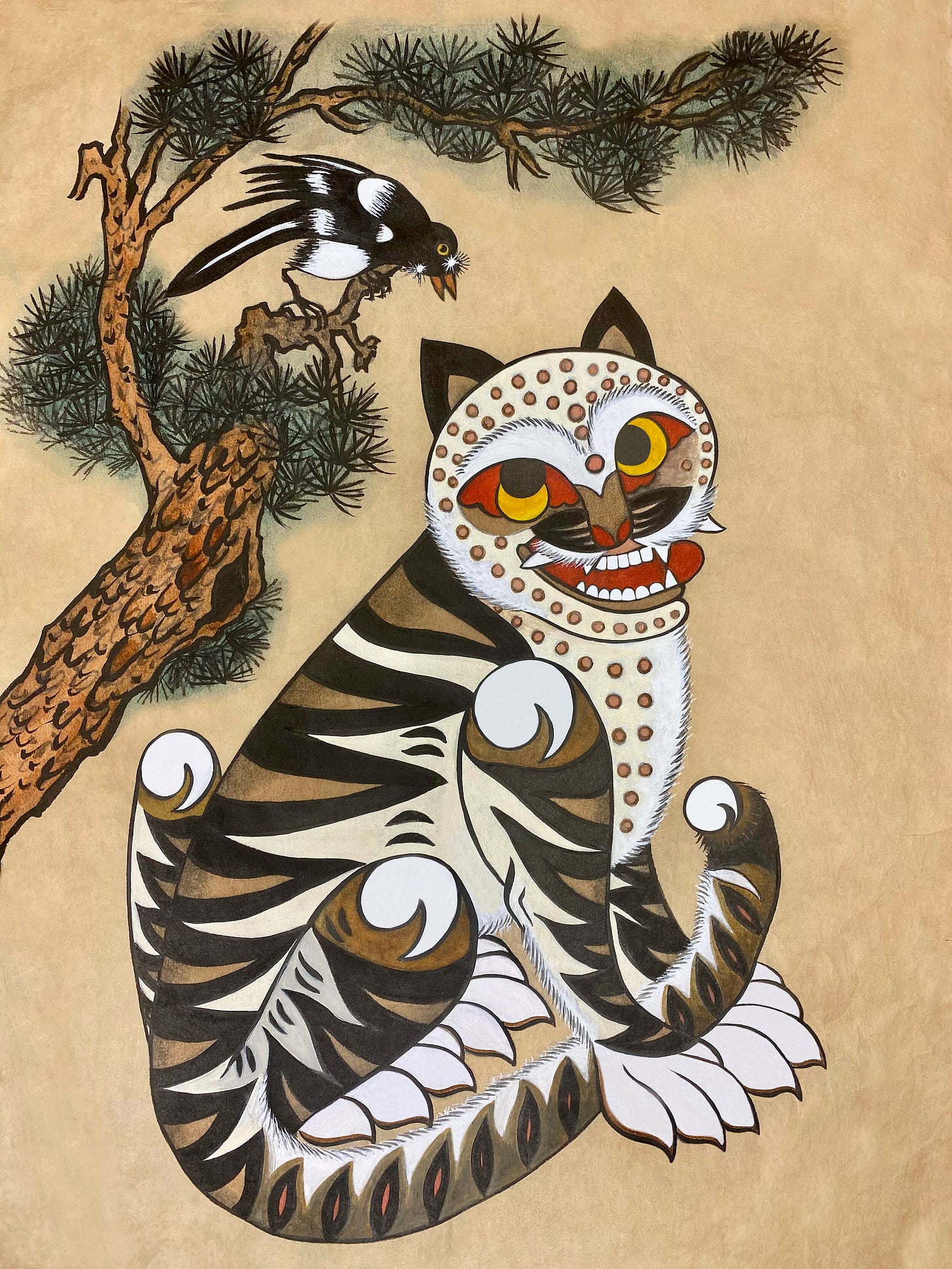Dreamtigers
rawr
In my childhood I was a fervent worshiper of the tiger: not the jaguar, the spotted “tiger” of the Amazonian tangles and the isles of vegetation that float down the Paraná, but that striped, Asiatic, royal tiger, that can only be faced by a man of war, on a castle atop an elephant. I used to linger endlessly before one of the cages at the zoo; I judged vast encyclopedias and books of natural history by the splendor of their tigers. (I still remember those illustrations: I who cannot rightly recall the brow or the smile of a woman.) Childhood passed away, and the tigers and my passion for them grew old, but still they are in my dreams. At that submerged or chaotic level they keep prevailing. And so, as I sleep, some dream beguiles me, and suddenly I know I am dreaming. Then I think: this is a dream, a pure diversion of my will; and now that I have unlimited power, I am going to cause a tiger.
Oh, incompetence! Never can my dreams engender the wild beast I long for. The tiger indeed appears, but stuffed or flimsy, or with impure variations of shape, or of an implausible size, or all too fleeting, or with a touch of the dog or the bird.
— Jose Luis Borges, “Dreamtigers” (from the collection of the same name)
Minhwa refers to Korean folk art produced mostly by itinerant or unknown artists without formal training, emulating contemporary trends in fine art for the purpose of everyday use or decoration. Minhwa literally means “painting of the people” or “popular painting”. This type of painting was often the work of anonymous craftsmen who faithfully adhered to the styles, canons and genres inherited from the past. Minhwa also involved a magical dimension; they were believed to possess beneficial virtues and to protect the owner and his family from evil forces.
Minhwa art developed into its present form in the seventeenth century. The artists are mostly unknown commoners of the low and middle class. Some were traveling visitors usually attending festivals who followed trends in fine art in order to develop the crude minhwa style artwork that expressed its emotions using symbolism, optimism, humor, and satire.
Kkachi horangi (까치호랑이) is a prominent genre of minhwa that depicts magpies and tigers. In kkachi horangi paintings, the tiger, which is intentionally given a ridiculous and stupid appearance (hence its nickname “idiot tiger” 바보호랑이), represents authority and the aristocratic yangban, while the dignified magpie represents the common man. Hence, kkachi horangi paintings of magpies and tigers were a satire of the hierarchical structure of Joseon's feudal society.
Recommended tiger-related reading
The Tiger: A True Story of Vengeance and Survival by John Vaillant
Read this a while back and absolutely loved it, would read again, 10/10.
Outside a remote village in Russia’s Far East a man-eating tiger is on the prowl. The tiger isn’t just killing people, it’s murdering them, almost as if it has a vendetta. A team of trackers is dispatched to hunt down the tiger before it strikes again. They know the creature is cunning, injured, and starving, making it even more dangerous. As John Vaillant re-creates these extraordinary events, he gives us an unforgettable and masterful work of narrative nonfiction that combines a riveting portrait of a stark and mysterious region of the world and its people, with the natural history of nature’s most deadly predator.





Hi Roger, the 2nd painting is painted by Kate Oh (Trabulsi). So please refer her name under the painting.